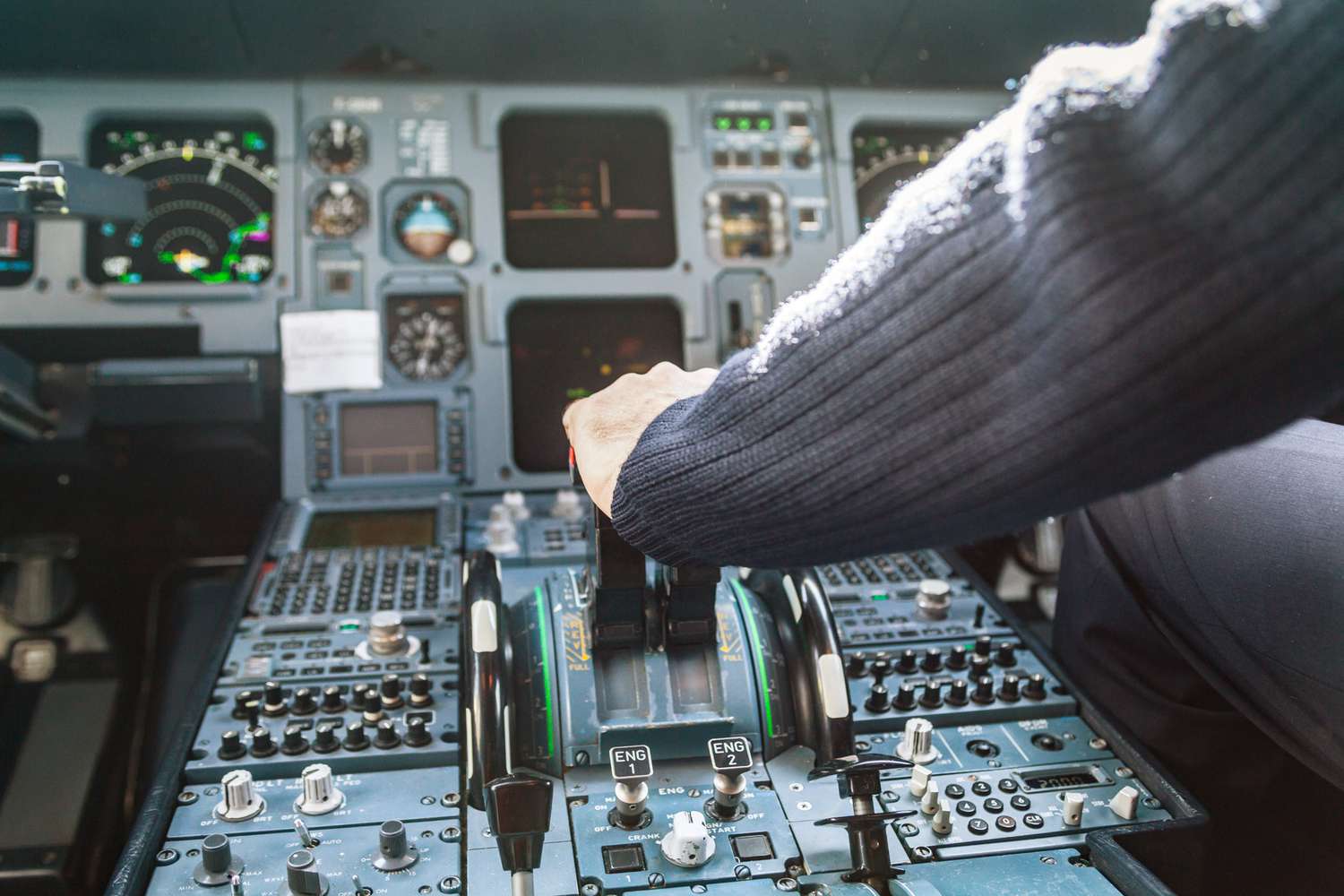Whether or not you are a first-time flier, a nervous flier, or a curious frequent flier, you may need questions on all of the noises you hear throughout a flight. And no, we do not imply infants crying or the jarringly loud drop of an iPhone.
Airplanes are giant, sophisticated machines. In the course of the flight, they make a sequence of noises that some passengers may discover unsettling since they are not one thing you hear every single day (until you are a pilot or flight attendant, after all). These sounds are usually a standard a part of the plane’s operation, and understanding what they’re and why they happen can assist ease any considerations and make your in-flight expertise just a little extra snug.
Whirring
When you hear whirring earlier than takeoff, that is the plane’s flaps — basically panels on the wings — extending. This modifies the form of the wing, creating extra elevate at decrease speeds (in different phrases, the aircraft can take off extra simply). You may truly see the flaps extending when you have a look at the wing once you hear this noise. They will whir once more after takeoff as they retract, then once more as they prolong earlier than touchdown.
Rhythmic Bumps Throughout Takeoff
As your aircraft is accelerating down the runway, you may hear and really feel a sequence of rhythmic bumps: thump thump, thump thump, thump thump. No, the wheel is not free and about to fall off, however it’s the wheel making that noise. Alongside the middle of the runway are a sequence of lights known as (appropriately) centerline lights. And the bumps you hear are the nostril wheel rolling over these lights. This isn’t solely regular, however factor, because it signifies your aircraft is completely centered on the runway. You may discover that these bumps cease as quickly because the nostril lifts up and the wheels go away the bottom.
A Rumble and a Thud Throughout Takeoff
“The primary main sound after take-off is the touchdown gear. Passengers will hear it retracting and shutting with a loud sound,” says Sue Fogwell, a former flight attendant. First, you may hear a mechanical whirring because the wheels are tucked into their wells, then you definitely’ll hear a loud thud or two because the bay doorways shut. “When it’s retracted, you may hear the motor, however you’ll really feel a sequence of rattles. These are the snubbers, that are like brakes that cease the spinning of the tires when they’re within the wheel wells,” says former pilot Dan Bubb, a professor on the College of Nevada, Las Vegas.
Engines “Powering Down” After Takeoff
Subsequent up is what sounds just like the engines lowering their energy — and that is precisely what’s occurring. Nevertheless it’s not as a result of they’ve misplaced energy totally. “The quantity of thrust used for takeoff is all the time greater than sufficient, so usually at a thousand ft or so, relying on the profile, it’s introduced again to what we name ‘climb energy,'” writes pilot Patrick Smith in his e book Cockpit Confidential. “This protects put on and tear on the engines and retains the aircraft from exceeding low-altitude velocity restrictions. The aircraft is neither descending nor decelerating; it’s simply not climbing as quickly.”
25 Issues You Ought to Do Earlier than Boarding a Airplane, Based on a Frequent Flier
Dings
In the course of the flight, you may doubtless hear a sequence of dings or chimes, typically in several patterns or tones. That is the crew speaking with one another — or in some circumstances, with the passengers. “After take-off, as soon as the aircraft ranges off, and it is at a snug angle, passengers will hear a double ding,” says Fogwell. “It is to inform flight attendants that they’ll rise up from their leap seats and start their inflight duties.” A single ding will accompany the fasten-seatbelt mild, too, alerting passengers that it is both protected to maneuver in regards to the cabin or that you’ll want to buckle up. There may be dings that alert flight attendants to take their seats, or dings to ask flight attendants to choose up the telephone. Each airline has its personal “language” of dings, so that you may hear totally different tones or patterns on totally different flights.
“Barking”
Whereas there may very well be a barking canine in your aircraft, we’re speaking a few extra mechanical barking sound that has just a little little bit of whirring in it. This can be a very particular sound to Airbus plane. “That barking sound on Airbus plane comes from the Energy Switch Unit. It transfers hydraulic energy from one system to the opposite as soon as the stress reaches 500 PSI,” says Bubb. Why do you solely hear this on Airbus plane? “Boeing plane additionally make use of a PTU, however the operation is barely totally different and it doesn’t bark like a canine,” writes Smith.
A Thud and a Rumble Throughout Touchdown
The sound of touchdown gear retracting performs out in reverse in a while within the flight, because the touchdown gear must be prolonged so that you can land. “When the touchdown gear is prolonged, you’ll really feel a thump and listen to a loud rush of air,” says Bubb. Do not be too fearful in regards to the sound of dashing air, because it’s merely the drag created by the touchdown gear. (That is why we retract touchdown gear throughout flight — to scale back drag).
What do you have to do when you’re fearful about an airplane sound?
Most sounds on an airplane are nothing to be afraid of, however when you have any considerations, it is all the time a good suggestion to talk up. “If a passenger sees or hears one thing alarming or uncommon, instantly inform a flight attendant,” says Fogwell. “Flight attendants depend on passengers in lots of cases.” However Fogwell additionally notes that you would be able to merely ask flight attendants — and even pilots — any questions it’s important to make you’re feeling extra snug in flight. “A passenger can even ask the flight attendant to ask the pilot a query after they’re not busy,” she says. “When at cruising altitude, particularly on longer flights, pilots do not thoughts a flight attendant asking a query for a passenger, so long as it is a non-security-related query.
Methods to Get Over Your Worry of Flying






